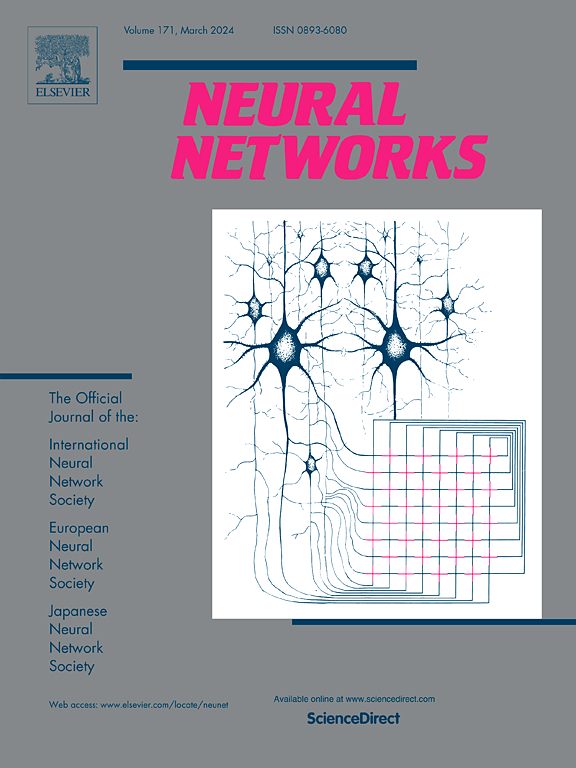Hierarchical feature extraction on functional brain networks for autism spectrum disorder identification with resting-state fMRI data
IF 6
1区 计算机科学
Q1 COMPUTER SCIENCE, ARTIFICIAL INTELLIGENCE
引用次数: 0
Abstract
Autism Spectrum Disorder (ASD) is a pervasive developmental disorder of the central nervous system, primarily manifesting in childhood. It is characterized by atypical and repetitive behaviors. Conventional diagnostic methods mainly rely on questionnaire surveys and behavioral observations, which are prone to misdiagnosis due to their subjective nature. With advancements in medical imaging, MR imaging-based diagnostics have emerged as a more objective alternative. In this paper, we propose a Hierarchical Neural Network model for ASD identification, termed ASD-HNet, which hierarchically extracts features from functional brain networks based on resting-state functional magnetic resonance imaging (rs-fMRI) data. This hierarchical approach enhances the extraction of brain representations, improving diagnostic accuracy and aiding in the identification of brain regions associated with ASD. Specifically, features are extracted at three levels, i.e., the local region of interest (ROI) scale, the community scale, and the global representation scale. At the ROI scale, graph convolution is employed to transfer features between ROIs. At the community scale, functional gradients are introduced, and a K-Means clustering algorithm is applied to group ROIs with similar functional gradients into communities. Features from ROIs within the same community are then extracted to characterize the communities. At the global representation scale, we extract global features from the whole community-scale brain networks to represent the entire brain. We validate the effectiveness of the ASD-HNet model using the publicly available Autism Brain Imaging Data Exchange I (ABIDE-I) dataset, ADHD-200,dataset and ABIDE-II dataset. Extensive experimental results demonstrate that ASD-HNet outperforms existing baseline methods. The code is available at https://github.com/LYQbyte/ASD-HNet.
利用静息态 fMRI 数据对大脑功能网络进行分层特征提取以识别自闭症谱系障碍
本文章由计算机程序翻译,如有差异,请以英文原文为准。
求助全文
约1分钟内获得全文
求助全文
来源期刊

Neural Networks
工程技术-计算机:人工智能
CiteScore
13.90
自引率
7.70%
发文量
425
审稿时长
67 days
期刊介绍:
Neural Networks is a platform that aims to foster an international community of scholars and practitioners interested in neural networks, deep learning, and other approaches to artificial intelligence and machine learning. Our journal invites submissions covering various aspects of neural networks research, from computational neuroscience and cognitive modeling to mathematical analyses and engineering applications. By providing a forum for interdisciplinary discussions between biology and technology, we aim to encourage the development of biologically-inspired artificial intelligence.
 求助内容:
求助内容: 应助结果提醒方式:
应助结果提醒方式:


